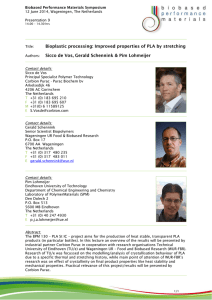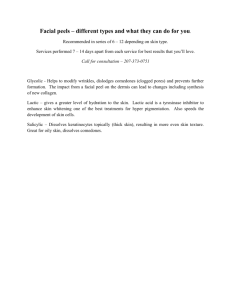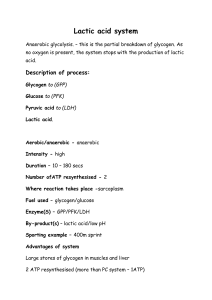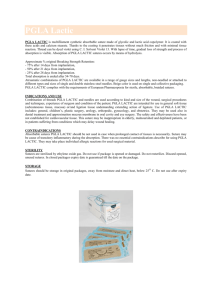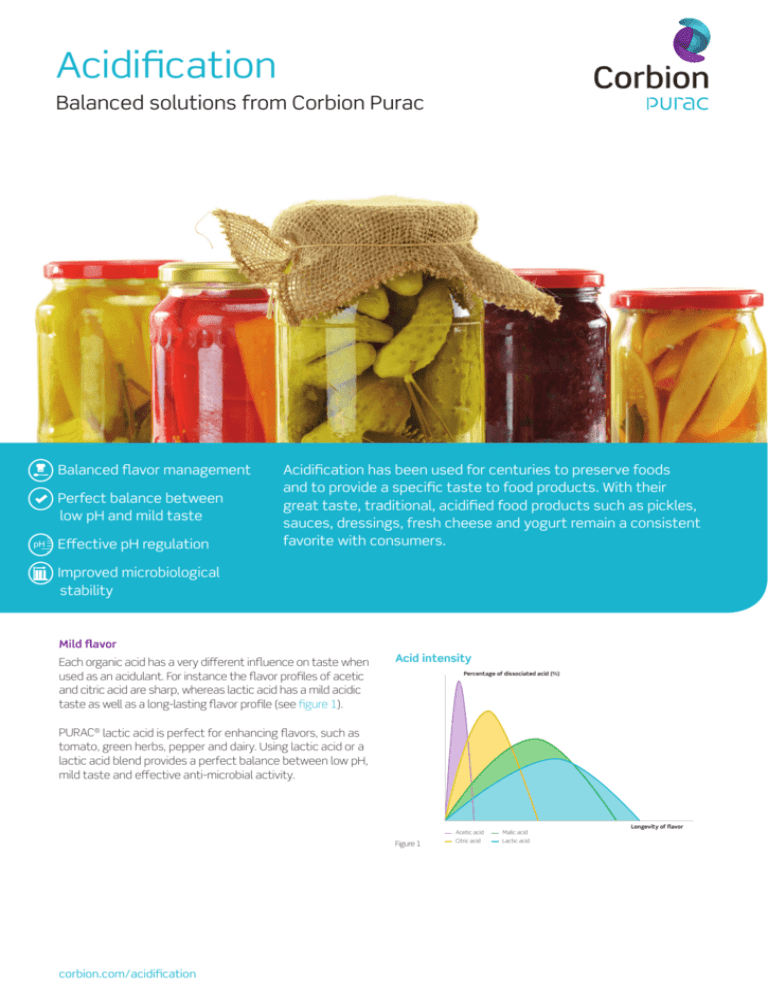
Acidification
Balanced solutions from Corbion Purac
Balanced flavor management
Perfect balance between
low pH and mild taste
pH
Effective pH regulation
Acidification has been used for centuries to preserve foods
and to provide a specific taste to food products. With their
great taste, traditional, acidified food products such as pickles,
sauces, dressings, fresh cheese and yogurt remain a consistent
favorite with consumers.
Improved microbiological
stability
Mild flavor
Each organic acid has a very different influence on taste when
used as an acidulant. For instance the flavor profiles of acetic
and citric acid are sharp, whereas lactic acid has a mild acidic
taste as well as a long-lasting flavor profile (see figure 1).
Acid intensity
Percentage of dissociated acid (%)
PURAC® lactic acid is perfect for enhancing flavors, such as
tomato, green herbs, pepper and dairy. Using lactic acid or a
lactic acid blend provides a perfect balance between low pH,
mild taste and effective anti-microbial activity.
Figure 1
corbion.com/acidification
Acetic acid
Malic acid
Citric acid
Lactic acid
Longevity of flavor
Acidification
Balanced solutions from Corbion Purac
Highly efficient
Percentage of dissociated acid
The specific pH influence and sourness of organic acids
can be explained by the acid’s pKa value. In short, the pKa is
the pH at which 50% of the acid is undissociated and 50%
is dissociated. Typically an acid with a low pKa (<4.0) is a
better acid for regulating pH. Lactic acid has a lower pKa
value (3.86) than acetic acid (pKa = 4.76) and is therefore a
stronger acidifier.
Figure 2 demonstrates the dissociation curves of lactic and
acetic acid. Figure 3 illustrates acidulation in a dressing with
either lactic acid or acetic acid. Taking into account the
difference in pKa values, more acetic acid than lactic acid
is needed to decrease the pH to 3.2. Based on 100% acid,
0.4%w/w of acetic acid was required to drop the pH to 3.2
whereas only 0.12% w/w of PURAC was sufficient to lower
the pH to pH 3.2. Thus, our PURAC portfolio enables the
manufacturer to balance taste (acidity) and pH.
100
Percentage of dissociated acid (%)
50
0
2
3
4
5
6
7
pH
Acetic acid
Lactic acid
Figure 2
Acidulation of a dressing
5
pH (-)
4.8
4.6
4.4
4.2
Microbiological stability
4
Corbion Purac’s portfolio is designed to incorporate
optimal hurdles to make food shelf-stable and safe.
In addition to being an effective acidulant, PURAC has
important antimicrobial properties. PURAC and PURASAL
(sodium/potassium lactate), are effective against a wide
variety of bacteria, including Listeria monocytogenes and
Pseudomonas. Its action complements that of other organic
acids, which are effective against yeasts and molds. Blending
PURAC or PURASAL with other acids can therefore enhance
overall microbial efficacy and boost flavor, counteracting the
sharpness of the other acids.
3.8
3.6
3.4
3.2
0
0.05
0.1
0.15
0.2
0.25
0.3
0.35
0.4
Acid (%w/w)
PURAC FCC
Figure 3
Acetic acid
Lactobacillus plantarum in a turkey salad at 7°C
10
log CFU/g
9
8
7
6
Figure 4 illustrates the effect of using lactic acid in
combination with acetic acid in a turkey salad at pH 5 and
7°C/ 45°F. A blend with PURASAL S inhibited the growth of
Lactobacillus plantarum and provided a more acceptable
acidic flavor profile. At a pH <3.7 PURAC BF, our lactic acid
buffer can be the best choice to stabilize the low pH of the
product.
5
4
3
2
1
0
0
20
30
40
50
60
Days
Control
0.5% w/w PURASAL S + 2.0% w/w vinegar
Product description
Purac product
pH (10%)
Benefit
Lactic Acid
PURAC® FCC
<3
Available in different concentrations to meet your need for pH regulation, while providing
a mild acidic flavor
Lactates and buffers
PURAC® BF
3 to 3.7
Buffered lactic acid solutions for pH regulation at a low pH
PURASAL
3.7 to 6
Sodium/potassium lactate solution for pH regulation at a medium to high pH
2.0 to 2.6
Blend with citric acid for a sharper flavor
Lactic acid blends
®
PURAC CL
®
PURAC CLM
2.0 to 2.6
Blend with citric and malic acid for a long-lasting sharp flavor
Opti Form®
5.0 to 9.5
Blends with acetic acid for pH regulation at pH above 5 with a mild acid taste
®
.
Interested in our solutions? Go to corbion.com/acidification
@CorbionFood
With over 80 years of fermentation expertise and the use of natural raw materials to produce exceptional food and beverage ingredients, Corbion Purac has a wealth of
expertise in the world of biobased food ingredients. Corbion is the global market leader in lactic acid, lactic acid derivatives and lactides, and a leading company in functional
blends containing enzymes, emulsifiers, minerals and vitamins. Corbion operates 10 production plants, in the USA, the Netherlands, Spain, Brazil and Thailand, and markets its
products through a worldwide network of sales offices and distributors.
© Copyright 2013 Corbion. All rights reserved. No part of this publication may be copied, downloaded, reproduced, stored in a retrieval system or transmitted in any form by any means, electronic,
mechanical photocopied, recorded or otherwise, without permission of the publisher. No representation or warranty is made as to the truth or accuracy of any data, information or opinions contained
herein or as to their suitability for any purpose, condition or application. None of the data, information or opinions herein may be relied upon for any purpose or reason. Corbion disclaims any liability,
damages, losses or other consequences suffered or incurred in connection with the use of the data, information or opinions contained herein. In addition, nothing contained herein shall be construed as
a recommendation to use any products in conflict with existing patents covering any material or its use.
FOOD • 20131031 • THMS-ACIDIFICATION-ENG-1013
Figure 4
10


